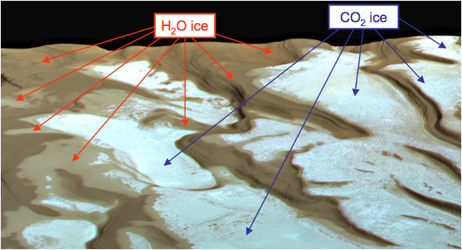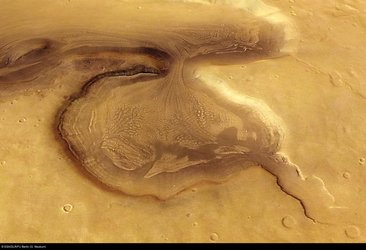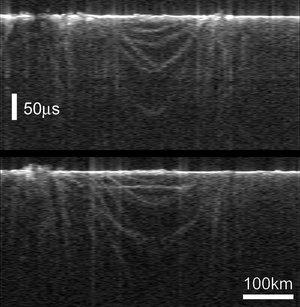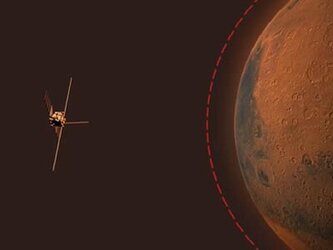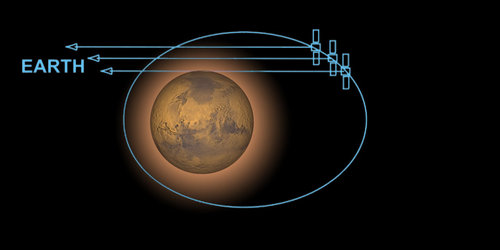Interplanetary networking: ESA’s Mars Express will keep an eye on NASA’s Phoenix
ESA’s Mars Express will keep an eye on NASA’s Phoenix lander as it makes its way to the Martian surface, setting an example for international cooperation and interplanetary networking.
Phoenix’s launch is scheduled for 4 August this year and it is expected to land on the Red Planet in the spring of 2008. The mission will investigate the Martian environment and will look beneath the frigid, arctic landscape in search of conditions favourable to past or present life.
At NASA’s request, ESA’s Mars Express spacecraft will be following Phoenix’s Entry Descent and Landing (EDL) phase.
The critical part of the descent lasts about 13 minutes. During this time, the probe will transmit a continuous stream of information to two of NASA’s satellites already orbiting the Red Planet. To be on the safe side, NASA has requested Mars Express, which has been in orbit around Mars since December 2003, to also monitor the EDL phase.

Mars Express has been selected since, in principle, its elliptical orbit makes it possible for the spacecraft to have a continuous view of the lander and to communicate with it for longer periods of time.
Mars Express will optimise its orbit so that Phoenix is continuously in view during the EDL phase. The final orbit adjustment required for Mars Express will be determined a few weeks after the launch of Phoenix. Final adjustments will be made in April next year, just before the Phoenix EDL phase.
ESA’s Mars Express Mission Manager, Fred Jansen explains, “One of the instruments on board Mars Express is the Mars Express Lander Communications system (MELACOM), designed to communicate with probes on the planet’s surface. Originally meant for communicating with the Beagle 2 lander, which was unfortunately lost, we can now use it to communicate with Phoenix.”

It is possible that the spacecraft will communicate with the lander, not only during EDL, but also for the remainder of the anticipated 90-day lifetime of the mission.
“NASA still has two other active probes on the Martian surface. When Phoenix joins the fleet around mid-2008, lots of data will have to be relayed back to Earth from the surface of Mars. If we are asked to help out by channelling part of the communication through Mars Express, we will, of course, try to accomodate such a request" adds Jansen.
Apart from assistance during the EDL phase, NASA has also requested ESA to support the launch of Phoenix from its ground station in Kourou, French Guiana.
For more information:
Michel Denis, ESA Mars Express Spacecraft Operations Manager Email: Michel.Denis @ esa.int















 Germany
Germany
 Austria
Austria
 Belgium
Belgium
 Denmark
Denmark
 Spain
Spain
 Estonia
Estonia
 Finland
Finland
 France
France
 Greece
Greece
 Hungary
Hungary
 Ireland
Ireland
 Italy
Italy
 Luxembourg
Luxembourg
 Norway
Norway
 The Netherlands
The Netherlands
 Poland
Poland
 Portugal
Portugal
 Czechia
Czechia
 Romania
Romania
 United Kingdom
United Kingdom
 Slovenia
Slovenia
 Sweden
Sweden
 Switzerland
Switzerland





























